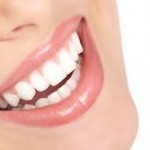 Every day, we get up, get ready for the day, eat and drink our morning breakfast, and off we go. We never really think about our mouth. But…
Every day, we get up, get ready for the day, eat and drink our morning breakfast, and off we go. We never really think about our mouth. But…
Your mouth is one busy place… All of your teeth are different and have different functions! This article is all about your teeth, and we’re just hitting the highlights. You could research the mouth, teeth and gums and be reading for months. There’s far more information about these important parts of our body than you ever would think possible.
First there are both upper teeth and lower teeth (or the upper part of your jaw and the lower part of your jaw.) Both of these rows have different uses and benefits for eating and for the positioning of your mouth, and both are equally important.
Both upper and lower rows of teeth consist of: (From front middle tooth to back molar)
-Central incisor
-Lateral incisor
-Canine or Cuspid
-First Premolar or Bicuspid
-Second Premolar or Bicuspid
-First molar
-Second molar
-Third molar
And of course, since good tooth care is so important, we also wanted to include a little bit of information on the teeth that are most at risk of becoming infected. Your molars (back teeth) are usually the ones that are at a high risk of developing cavities. This is because they are harder to clean than most other teeth due to deep grooves and their location in the mouth. You have to make an extra effort to reach back there with your toothbrush every time you brush, to keep them clean!!
On a side note, the main difference between the upper row of teeth and the lower row of teeth is the way that they are attached to your body. The upper row is attached to the maxilla, which is attached to the skull. The bottom row of teeth is attached to the mandible, which connects to the skull by your Tempromandibular joint, or TMJ. This is important because your lower jaw can have a lot more issues, especially when injured, because it is an extension of your body instead of being directly attached. The TMJ is an extremely important ‘hinge’ that keeps your lower jaw in place and working properly. Teeth are rooted very securely – when you think about it, it’s amazing that they don’t come loose.
So how and why do baby teeth fall out? Permanent teeth start developing even before we are born. Yes, they are there, even though usually we cannot see them and so we do not know that this is going on! By the age of 6 they start erupting, replacing primary teeth. Note that the number of adult permanent teeth outnumbers our “baby teeth” by 12. We get 32 permanent teeth once all primary teeth have come out.
So now you know some facts about your teeth that you probably never thought of otherwise. You probably have a new respect for them and the job they do. There is truly a lot going on with your teeth, and it is easy to take them for granted. So the next time you go to eat that sticky taffy or caramel, or bite into something really hard, maybe you’ll think twice!
